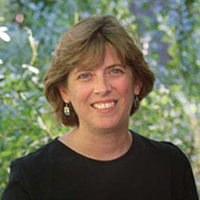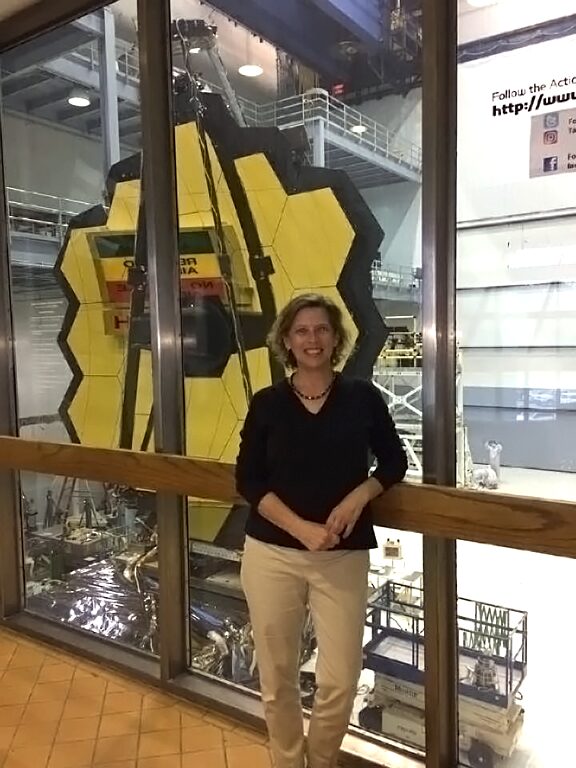Why will it take six months to see JWST's first science images?

Written by
Heidi Hammel
Vice President, Board of Directors of The Planetary Society; AURA Vice President for Science
December 22, 2021
Dr. Heidi B. Hammel is vice president of science for the Association of Universities for Research in Astronomy (AURA), vice president of The Planetary Society, and one of six interdisciplinary scientists for JWST.

JWST in a nutshell
The James Webb Space Telescope (JWST) has launched from the Guiana Space Center in Kourou, French Guiana. More than 20 years in the making, JWST’s observations of the cosmos will change our understanding of our universe.
The Planetary Society has already created a resource page describing the JWST mission and its expected science return. In this article, I concentrate on one specific question related to JWST: Why must we wait for 6 months to see the first science images?
Unfolding the telescope
JWST is big! The main mirror, made up of 18 hexagonal mirror segments, is 6.5 meters (21 feet) wide, a hefty increase over the 2.4 meters of the Hubble Space Telescope. And the sunshield that protects JWST’s mirrors from the warmth of the Sun, Earth, and Moon is even larger: 22 by 10 meters – comparable in size to a regulation tennis court. To fit inside the rocket fairing (the compartment that will hold JWST as it is launched), both the mirror and the sunshield were folded up in a complex pattern of space origami. More importantly, both the mirror and sunshield must unfold successfully after launch for JWST to become fully functional.
JWST’s destination is the Earth-Sun Lagrange 2 point. After launch, it will take 29 days for the telescope to reach L2, and that month is characterized by NASA as “29 days on the edge.”
During this month, JWST will go through a carefully choreographed sequence of “deployments” of its major structural components: unfurling its solar panels, deploying an antenna, and then beginning the slow process of sunshield deployment. After the sunshield is in place, the secondary mirror swings into place, and the wings of the primary mirror fold out. If this sounds simple, it is not:

Teams of engineers, based at the Space Telescope Science Institute (STScI) Mission Operations Center, will control and monitor JWST as it deploys. STScI, located in Baltimore, Maryland and managed by AURA, serves as the science community’s interface to the telescope as well as being the site of JWST mission operations.
After practicing every step of the telescope deployment sequence for months, the teams are ready for the real thing. They will initiate and monitor more than 300 unique activities, resulting in 50 major deployments involving 178 mechanisms. A failure of even one mechanism means a non-functioning telescope. Fortunately, all of these mechanisms, activities, and deployments have been rigorously tested on Earth, and just in case, the JWST engineering team has back-up plans, as well as back-up plans to the back-up plans.
By the time JWST arrives at L2, it will be fully deployed and ready to start the next phase of preparations: commissioning. Commissioning is the process by which JWST and its equipment are formally made ready for science and comes in two main activities. First, the JWST telescope team needs to align all of the segments of the primary mirror, so they function as one perfectly focused telescope (telescope commissioning). Second, the JWST Science Instrument teams must test and calibrate each of the many modes of the four science instruments on board (science instrument commissioning). Let’s talk about these two commissioning sequences in turn:

Telescope commissioning
The Ariane 5 rocket is not wide enough to accommodate the 6.5-meter mirror needed to accomplish JWST’s scientific goals. To solve this conundrum, JWST’s engineers decided to create its mirror out of 18 hexagonal segments instead of one large piece of glass; that way, the mirror could be literally folded to fit inside the rocket. After launch and unfolding, these segments will need to be aligned using extremely sensitive “actuators” (small devices that change the shape and location of each mirror segment).
It will take the JWST team three months to very slowly and carefully align the 18 mirror segments. How slow? One of the telescope scientists described it to me this way: “the mirror segments move at the same rate that a blade of grass grows.” This delicate but time-consuming process brings the 18 separate images together to create one sharp image.
The first round of focusing will be for just one instrument, the Near-Infrared Camera. Remember, though, that JWST has four separate instruments (more on that below), and they are not all looking at exactly the same point on the sky. The focusing process must then be repeated in what is called a “Multi-Instrument Multi-Field” (MIMF) sequence, which may be done more than once to achieve perfect focus for all the instruments.
By the time JWST is four months out from launch, the telescope should be aligned, and all the instruments focused. After that, the JWST team turns its attention to the science instruments themselves.
Scientific instrument commissioning
The final phase of JWST’s preparations for operation involves calibrating and testing all of the operational modes of its four scientific instruments: the Mid-Infrared Instrument (MIRI), the Near-Infrared Camera (NIRCam), the Near-Infrared Imager and Slitless Spectrograph/Fine Guidance Sensor (NIRISS/FGS), and the Near-Infrared Spectrograph (NIRSpec). More information about these instruments is available elsewhere.
These instruments must be very cold to operate properly, and they must be cooled slowly to avoid outgassing (outgassing refers to the release of gas trapped on or within the surfaces; such gas can condense on optics and electronics, degrading their performance). Thus, the instruments begin cooling a few days after launch, and continue to slowly cool throughout the telescope commissioning described above. It takes MIRI (the camera most sensitive to temperature) over three months to reach its final operating temperature.
Each instrument has many operational modes, and all need to be verified before JWST is ready for science operations. The overall instrument commissioning sequence lasts over two months. A spreadsheet of activities for that period lists over 200 discrete activities. These range from things that are fairly easy to understand (focus checks, astrometric calibration, assessment of sky background variations, moving-target tracking tests) to more esoteric tests that even I can’t really translate into understandable terms (“HDE TCL characterization”). Here is the gist, though: every mode, whether imaging or spectroscopy or coronography, must be tested. The teams will assess how much the telescope jitters (moves); how much stray light is introduced by bright objects like planets or bright stars; what the shape is for the “point-spread function” (PSF – the characteristic profile across a point source like a star); what the “flat fields” and “bias frames” look like (data related to the detectors’ responsiveness); and much more.
By the end of the science instrument calibration, the teams will have a thorough understanding of the telescope’s sensitivity and capability. The telescope will be ready to begin its planned science program!
Celebrating JWST’s 6-month milestone with first science!
An incredible amount of planning has gone into this meticulously orchestrated half-year of deployment and commissioning. The payoff will be the first science images. The targets are a curated list of objects, selected to illustrate JWST’s capabilities. With their release we will celebrate the completion of commissioning, and the beginning of science observations. At the very earliest, these first science images should appear in late June, though given the complexities I’ve outlined above, I would not be surprised if we have to wait until July or even August. But I am confident of one thing: they will be worth the wait.
Follow along with JWST as the months unfold; it will be an exciting ride!

Support our core enterprises
Your gift today will go far to help us close out the year strong and keep up our momentum in 2026.
Donate

 Explore Worlds
Explore Worlds Find Life
Find Life Defend Earth
Defend Earth

